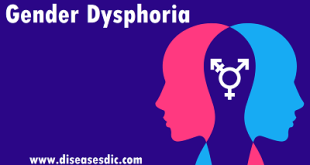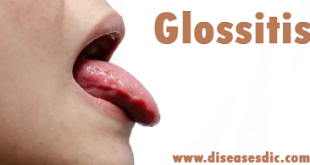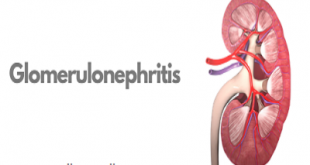Description
Granuloma inguinale or Donovanosis is a genital ulcerative disease caused by the intracellular gram-negative bacterium Klebsiella granulomatis (formerly known as Calymmatobacterium granulomatis). The disease occurs rarely in the United States, although it is endemic in some tropical and developing areas, including India; Papua, New Guinea; the Caribbean; central Australia; and southern Africa.
Clinically, the disease is commonly characterized as painless, slowly progressive ulcerative lesions on the genitals or perineum without regional lymphadenopathy; subcutaneous granulomas (pseudobuboes) also might occur. The lesions are highly vascular (i.e., beefy red appearance) and bleed. Extragenital infection can occur with extension of infection to the pelvis, or it can disseminate to intra-abdominal organs, bones, or the mouth. The lesions also can develop secondary bacterial infection and can coexist with other sexually transmitted pathogens.
Pathophysiology of Granuloma Inguinale
The intracellular organism responsible for granuloma inguinale was initially described by Donovan over a century ago, and subsequently, the bacterium was classified in 1913 as Calymmatobacterium granulomatis. Although Anderson suggested that the organism be eponymously named Donovania granulomatosis, Carter et al discovered that the molecular structure of the causative organism was similar to Klebsiella species and reclassified the gram-negative pleomorphic bacillus as Klebsiella granulomatis.
The mode of transmission of granuloma inguinale primarily occurs through sexual contact; however, it is hypothesized to have low infectious capabilities because repeated exposure is necessary for clinical infection to occur. Additionally, granuloma inguinale may also be obtained through the fecal route or by passage through an infected birth canal.
Transmission
Granuloma Inguinale is generally considered to be transmitted via sexual contact, but not always and could be transmitted by close personal contact or faecal contamination. Infections that cause ulcers and sores around the genitals may increase the risk of HIV transmission. Other causes of ulcers or sores need to be considered, before a diagnosis is made.
Causes and risk factors
- Granuloma inguinale (Donovanosis) is caused by the bacterium Klebsiella granulomatis.
- The disease is commonly found in tropical and subtropical areas such as southeast India, Guyana, and New Guinea.
- There are about 100 cases reported per year in the United States. Most of these cases occur in people who have traveled to or are from places where the disease is common.
- The disease spreads mostly through vaginal or anal intercourse. Very rarely, it spreads during oral sex.
- Most infections occur in people ages 20 to 40.
Symptoms of Granuloma Inguinale
Symptoms can occur 1 to 12 weeks after coming in contact with the disease causing bacteria.
These may include:
- Sores in the anal area in about half of the cases.
- Small, beefy-red bumps appear on the genitals or around the anus.
- The skin gradually wears away, and the bumps turn into raised, beefy-red, velvety nodules called granulation tissue. They are often painless, but they bleed easily if injured.
- The disease slowly spreads and destroys genital tissue.
- Tissue damage may spread to the groin.
- The genitals and the skin around them lose skin color.
In its early stages, it may be hard to tell the difference between donovanosis and chancroid.
In the later stages, donovanosis may look like advanced genital cancers, lymphogranuloma venereum, and anogenital cutaneous amebiasis.
Possible Complications
Health problems that may result from this disease include:
- Genital damage and scarring
- Loss of skin color in genital area
- Permanent genital swelling due to scarring
Diagnosis of Granuloma Inguinale
Microscopic examination
Microscopic examination showing Donovan bodies in fluid from a lesion. Granuloma inguinale is suspected in patients from endemic areas with characteristic lesions. Diagnosis of granuloma inguinale is confirmed microscopically by the presence of Donovan bodies (numerous bacilli in the cytoplasm of macrophages shown by Giemsa or Wright stain) in smears of fluid from scrapings from the edge of lesions. These smears contain many plasma cells.
Biopsy
Biopsy specimens are taken if the diagnosis is unclear or if adequate tissue fluid cannot be obtained because lesions are dry, sclerotic, or necrotic. The bacteria do not grow on ordinary culture media.
Treatment Options for Granuloma Inguinale
Antibiotic choices are based on small series and clinical experience. Durations of therapy, as noted, should be taken as estimates and lesions should, in general, be treated until resolution.
- Azithromycin, 1g orally per week for at least 3 weeks, or until healing is complete (Centers for Disease Control [CDC] guidelines)
- Azithromycin, 1g initially, then 500mg daily until healing is complete (World Health Organization [WHO] guidelines)
- Docycycline, 100 mg twice daily for at least 3 weeks, or until lesions have healed
- Ciprofloxacin 750mg daily for at least 3 weeks, or until healing is complete
- Trimethoprim-sulfamethoxazole (160mg/800mg), twice daily for at least 3 weeks, or until healing is complete
- Erythromycin base, 500mg four times a day for at least 3 weeks, and until all lesions have healed
In the pregnant patient or those coinfected with HIV, adding a parenterally administered aminoglycoside such as gentamycin should be considered. Parenteral gentamycin should be considered in patients slow to respond to therapy. Surgical debridement may be needed in cases of extensive fibrotic or invasive lesions
Prevention of Granuloma Inguinale
The following general measures can help prevent granuloma inguinale (and other sexually transmitted diseases):
- Regular and correct use of condoms
- Avoidance of unsafe sex practices, such as frequently changing sex partners or having sexual intercourse with prostitutes or with partners who have other sex partners
- Prompt diagnosis and treatment of the infection (to prevent spread to other people)
- Identification of the sexual contacts of infected people, followed by counseling or treatment of these contacts
- Not having sex (anal, vaginal, or oral) is the most reliable way to prevent sexually transmitted diseases but is often unrealistic.
 Diseases Treatments Dictionary This is complete solution to read all diseases treatments Which covers Prevention, Causes, Symptoms, Medical Terms, Drugs, Prescription, Natural Remedies with cures and Treatments. Most of the common diseases were listed in names, split with categories.
Diseases Treatments Dictionary This is complete solution to read all diseases treatments Which covers Prevention, Causes, Symptoms, Medical Terms, Drugs, Prescription, Natural Remedies with cures and Treatments. Most of the common diseases were listed in names, split with categories.







